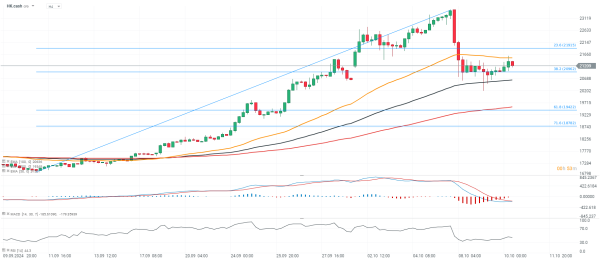Chart of the day - HK.cash (10.10.2024)
The Hang Seng Index closed nearly 3% higher today, and the mainland CSI rose 1%, after China's central bank announced the detailed size of the SFISF lending facility. The gains in China were not huge today, however, with HK.cash currently trading at an 'almost symbolic' 1% gain. The magnitude of the rebound was all the more modest today when one realizes that the Shenzhen-based SZSE Composite index, was on track for an 8% decline, the biggest since May 1997 i.e. 27 years, and today recorded another 0.8% decline.
- The market's attention is now focused on China's Ministry of Finance press conference scheduled for Saturday, in which China will present details of its fiscal stimulus plan. The theme of the press conference is “intensifying countercyclical fiscal policy adjustment to promote high economic growth.”
- Market consensus is for a minimum of 2 to 3 trillion yuan (about $300-400 billion), as part of a broad stimulus package according to Switzerland's Julius Baer; the bank expects more 'stimulus' related announcements in the coming weeks
- China's central bank, the People's Bank of China (PBOC), today announced the creation of a swap facility for securities, funds and insurance companies (SFISF), with an initial allocation of 500 billion yuan, (equivalent to about $71 billion US dollars).
- The initiative aims to support primarily the stock market, by getting institutions to abandon bonds and increase allocations in indices. While the announcement that such an initiative would take place was admittedly made almost two weeks ago, today's decision shows that the PBoC is really determined to act quickly, creating a loan facility for financial institutions, insurers and funds, to buy stocks.
The big picture is to improve liquidity conditions in the Chinese market and support a range of equity investments by providing government bonds to institutions. The mechanism allows securities institutions to leverage bonds and resell them to raise capital, which can then be channeled into stock purchases. Not surprisingly, investors took its creation as good news, improving sentiment around Chinese indices. The question is, will it be for long?
HK.cash chart (H4 interval)

Source: xStation5